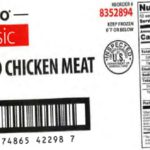Hurricane PLAN & PREPARE FOR RESIDENTS
Miami Beach residents are urged to develop a disaster preparedness plan before an emergency strikes. Plan in advance where you will stay, how you will get there, and what supplies you will take. As part of your plan, you should have an emergency supply kit ready. When you return to the city, you may not have electricity or water for weeks. Consider the needs of elderly and infant family members and pets.
Supplies
Preparation Checklist
Quick Home Inspection
Trees
Boats
Roof & Gutters
More Hurricane Information
Preparation Checklist Make prior arrangements to stay with friends or relatives living in a non-evacuation area or check into a hotel located inland; or, as a last resort, use a public shelter (bus evacuation pick-up sites). Make sure that you take proper Miami Beach identification with you. You will need it to re-enter the city.
o Send a list of friends’ and neighbors’ telephone numbers and copies of important papers to family members in another city.
o Tell family, neighbors, and service agencies where you would go to stay in an emergency.
o Have a transportation plan for emergencies.
o If necessary, register with Miami-Dade County’s Special Needs Evacuation Assistance Registry.
o Make arrangements with a kennel or friend to care for your pets. There are two shelters that will accept pets with prior registration.
o Have a plan to secure your boat (see Boats) or take it elsewhere.
o Review your insurance policies to ensure that you are fully covered. Insurers cease issuing policies when tropical systems are within the quadrant.
o Inventory and take photos of your property and valuables, and store these photos and other important documents in a waterproof container and take with you when evacuating.
o Track storms on a hurricane tracking map.
o Practice your Disaster Plan.
Quick Home Inspection
o Inspect your roof
o Trim trees
o Update insurance coverage
o Check your shutters (practice installing especially if you bought a new home or new shutters)
o Test your generator and chainsaw for proper operation.
Trees
No tree is immune to storm damage, but with proper pruning, you can reduce the risk. Remember that you must obtain a permit to prune and/or remove certain trees. View the City Codes or call Public Works at 305.673.7080 for more information.
Have your trees inspected by an International Society of Arboriculture certified arborist to see if your trees need pruning; you can find a certified arborist on isa-arbor.com. Do this as soon as possible, because they will be increasingly busy as the hurricane season approaches. It is the responsibility of the tree trimmer to remove all branches and debris from your residence when the job is finished. If you prune the trees yourself, be sure to dispose of organic waste properly (see bundle guidelines). Most importantly, do it now; once a storm is on its way, it is too late to prune.
Boats
Prepare to move your boat when a hurricane is likely, even before a Hurricane Watch is issued. If you wait too long to relocate the boat, bridges may be locked down and you may not be able to get your boat and yourself to safety. Be advised that high-rise storage racks can be toppled by a storm’s high winds. If possible, put your boat on a trailer and take it further inland. If you must leave your boat in the water, make sure it is securely anchored, secure extra lines and add chafe protection. Check with your local marina for more advice.
Roof and Gutters
Inspect your roof for proper overflow drainage, especially on flat roofs. Make sure that all drains are clear of debris. Clogged drains will cause water to pool up on roofs and cause extensive damage. Check for loose rain gutters and drain spouts and secure.










